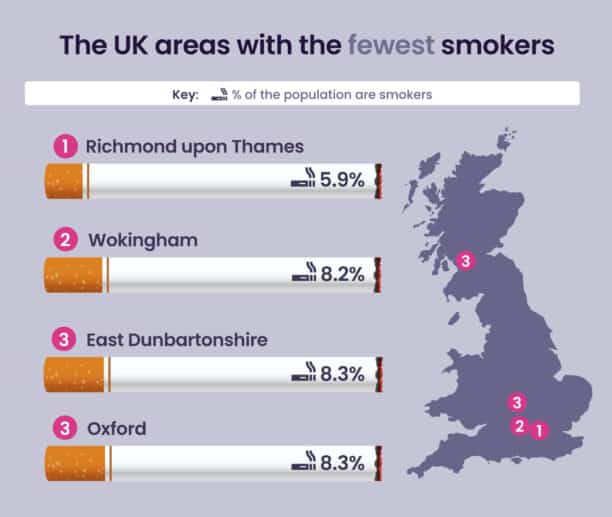
Smoking Prevalence Varies Widely Across Europe
The percentage of the EU population that smokes daily varies significantly across member states. According to the data, the countries with the highest smoking rates are Bulgaria (28.2%), Turkey (27.3%), Greece (27.2%), Hungary (25.8%), and Latvia (24.9%). The other countries with the lowest smoking rates are Sweden (9.3%), Iceland (11.2%), Finland (12.5%), Norway (12.9%), and Luxembourg (13.5%).

Gender Differences in Smoking Habits
Across the EU, men are more likely to be daily smokers than women. In 2019, 22.3% of men aged 15 and over were daily smokers, compared to 14.8% of women. The largest gender gaps were in Romania, Latvia, and Bulgaria. Where the smoking rate among men was over 20 percentage points higher than among women. However, in a few countries like Sweden and Denmark, the smoking rates were nearly equal between men and women.
Smoking Duration and Consumption Levels
The data shows that the EU has reached the rate of 76.2 for at least 10 years. Men are more likely than women to have been smoking for a decade or more (78.1% vs 73.5%). In terms of consumption levels, 5.9% of the EU population aged 15 and over were considered “heavy” smokers, consuming 20 or more cigarettes per day. This heavy smoking rate was highest in Bulgaria, at 12.9%.
E-Cigarette Use Across Europe
While traditional cigarette smoking remains a major public health concern, the use of electronic cigarettes and vaping devices has also emerged as an area of focus. The countries with the highest rates of e-cigarette use (both occasional and daily) are France (6.6%), Poland (6.0%), and the Netherlands (5.9%). In contrast, Spain (1.0%) and Turkey (0.9%) had the lowest reported rates of vaping.

Implications and Policy Responses
Smoking remains the largest avoidable health risk in the EU, contributing to a significant burden on healthcare systems. The data highlights the need for continued efforts to reduce smoking prevalence, particularly among high-risk groups.
Governments across Europe have implemented various policies, such as smoking bans, graphic health warnings, and cessation support programs, to discourage tobacco use. As the landscape of nicotine consumption evolves, policymakers will also need to carefully navigate the emerging challenges posed by e-cigarettes and vaping.

The UK and EU have taken different approaches to tobacco control. The UK has implemented more policies, an advertising ban, standardized packaging, and targets to reduce smoking prevalence. In contrast, the EU Tobacco Products Directive has less extensive advertising restrictions and the EU has not adopted specific national goals. The UK has also taken additional steps to restrict tobacco retail that is not mandated at the EU level.
The EU needs to maintain its focus on tobacco control to further reduce smoking rates and the associated health burden. This requires providing effective smoking cessation support, including addressing the increased use of e-cigarettes and the decline in the use of cessation services. Addressing the social and economic disparities in smoking prevalence is also a key priority. Sustained political commitment and comprehensive tobacco control strategies will be essential going forward.














